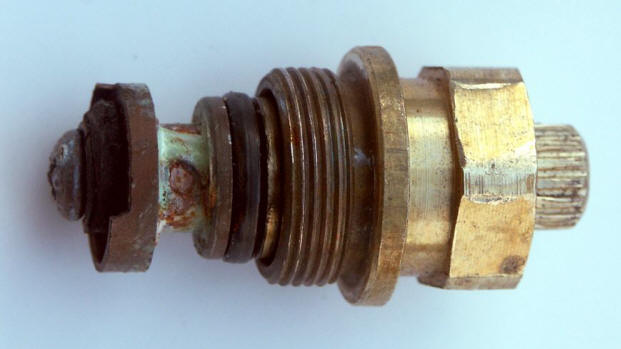Dealloying (selective leaching) |

Dezincification selectively removes zinc from the alloy, leaving behind a porous, copper-rich structure that has little mechanical strength. An in-service valve suffering from dezincification has a white powdery substance or mineral stains on its exterior surface. The valve may exhibit water weeping from the valve body or stem/bonnet seal.
Why Dezincification Occurs Copper-zinc alloys containing more than 15% zinc are susceptible to dezincification. Zinc is a highly reactive metal, as seen in its galvanic series ranking. This reactivity stems from the fact that zinc has a very weak atomic bond relative to other metals. Simply, zinc atoms are easily given up to solutions with certain aggressive characteristics. During dezincification, the more active zinc is selectively removed from the brass, leaving behind a weak deposit of the porous, more noble copper-rich metal.
Conditions favoring dezincification are contact with slightly acid or alkaline water. Not highly aerated, low rates of flow of the circulating liquid, relatively high tube-wall temperatures and permeable deposits or coatings over the tube surface.
 |